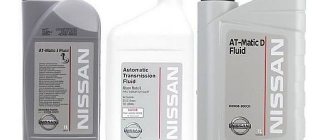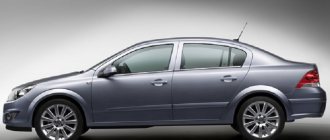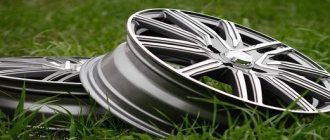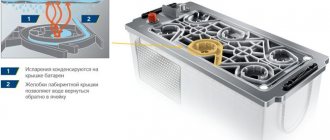How it works?
A solar car does not use a conventional internal combustion engine to move, but an electric motor powered by batteries.
The first solar-powered cars were designed in the USA in the middle of the last century. The idea itself was extremely tempting, especially considering the abundance of sunny days in most American states. The problem was the lack of sufficiently powerful batteries, which at that time did not allow the development of the creation of a solar car. New attempts to manufacture solar-powered cars date back to the nineties of the last century, when more efficient batteries appeared. It is necessary to understand what the purpose of developing solar cars was.
The main reason is the fuel crisis, which began due to the increase in the number of cars. Rising fuel prices, environmental pollution and other negative aspects forced engineers to look for alternative types of machine design. Solar cars are a common means of transportation, although they are not yet widely used.
In order to understand what a solar car is, you need to consider its design. First of all, let's consider what energy source is used in solar cars. This is sunlight falling on the roof of a car, on which photovoltaic cells are placed - solar panels. They convert light into electric current, which is stored in batteries and used to power a brushless electric motor. The operation of the system is controlled by a controller that monitors the charging mode of the batteries, switches them if necessary and performs other functions.
How is a car battery charged from solar cells?
Any experienced car owner knows that charging car storage devices is a rather lengthy process. Acid storage devices must be recharged with a current value of 0.1 of the rated capacity. If you decide to organize accelerated charging exceeding this parameter, count on a reduction in the life of the battery.
Things are much better with solar panels. Here, exceeding the parameters is almost impossible, because the output current in most models does not exceed one ampere. Of course, in this case, charging the battery will take a lot of time, but it will proceed according to all the rules. It is precisely because of the duration of the charging process that solar cells are only suitable for “resurrecting” the battery in order to start the internal combustion engine and maintain it in an active state.
If we touch on the specific characteristics of solar panels, then to maintain the battery at an acceptable level, models with a power of 5-6 W are quite enough. Well, if you want your battery to be charged to full readiness in a tolerable period of time, then here you need to give preference to variations with a power potential of 30-60 W.
As a rule, it is customary to listen to the opinions of experts, and in this case they advise the following: select a solar cell module with a length of a meter, a rated power of about 15 W and a voltage of 12 V. Another useful recommendation from experts: buy a modification with a battery charge controller, but If not fate, purchase the gadget separately. What is such an urgent need for this controller? The fact is that the device protects a standard car battery from overcharging or reverse discharge.
If you have at your disposal a fairly large vehicle and, accordingly, a roof of a very large area, then it becomes possible to place several solar panels and join them into a monolithic chain to obtain greater power potential. The surface area of the minibus roof is quite suitable for such beneficial manipulations.
Popular acting models
A solar-powered car is an attractive idea in all respects, which is why almost all well-known manufacturers are developing such designs. Among the most famous models are:
Model Ecletic
This is a development of the French company Venturi, capable of reaching speeds of up to 50 km/h and having a power reserve of 50 km. The power of the power plant is 22 liters. With.
Astrolab
This is also the brainchild of Venturi engineers, with a range of 110 km and a speed of up to 120 km/h with an engine power of 16 kW.
Stella
This is the development of specialists from Holland. Engineers at the Eindhoven University of Technology have created their own version of a family electric car with a range of up to 600 km. The machine has high-capacity batteries.
Solar World GT
Product of the Swiss company Green GT. The power of the power plant is 400 hp. s., maximum speed - up to 275 km/h. The car accelerates to 100 km/h in just 4 seconds.
There are also Russian developments of solar-powered cars, which are being carried out in St. Petersburg. The direction is promising and is actively developing in all developed countries of the world.
Reviews
In reviews of solar panels for a car, car owners note the need to purchase a complete set of equipment for a solar system, including panels, a vibration-resistant and durable housing with an aluminum surface that dissipates heat well, a controller and a battery. The latter only works in conjunction with lead-acid batteries and must have a rated power of 12 volts. Efficient and uninterrupted operation of solar panels is possible only if they are perpendicular to the sun's rays. Ideally, car owners are advised to purchase a special system that tracks the position of the sun and automatically finds the optimal angle for the battery, but this type of design costs a lot of money to assemble.
When installing a solar battery on a car, it is advisable to take into account the characteristics of the selected model, the car’s battery and the on-board network. Manufacturers of solar panels supply detailed instructions for installation and operation of the product with rated values of power, capacity and voltage. Standard equipment may also include a controller, battery terminals and a cigarette lighter plug.
Car solar systems are not a complete replacement for the battery, but they allow you to recharge the battery and provide power to the main electrical equipment of the car. The best way to use a solar battery is to recharge the battery in emergency situations. Fully charging the battery is only possible using a mains charger.
Source
Sun car racing
With the advent of solar cars, a new sport arose - brainsports. This is a race in solar-powered cars.
Competitions have already been held in different countries. The races that take place between the Australian cities of Darwin and Adelaide are widely known. The total length of the route is 3000 km. The intention of the organizers of such events is to promote and promote the development of research and production of solar cars in different countries.
Equipment is tested under real load conditions, allowing manufacturers to find and eliminate flaws in the design. It is too early to treat such competitions as serious sporting events, but the process is ongoing and developing.
Popular models of solar panels for recharging the battery of a car with an internal combustion engine
SunForce
This Canadian manufacturer produces solar panels for various purposes. Among the products offered, you can also find modifications for installation on a car with an internal combustion engine, and they are quite powerful.
The dimensions of the device are: 97x35x4 cm, and its power is 17 W. Another good thing is that the kit includes a 7-amp 12-volt controller. In addition, the manufacturer was generous with the adapter for the cigarette lighter, as well as “crocodiles”.
The device from SunForce is suitable not only for a passenger car, it can easily be equipped with a boat, a tractor, and it will also come in handy on a truck. The developers claim that their product will perform its duties even in foggy weather and rain.
TSM-15F
This model is offered in a flexible case, and its dimensions are as follows: 60x27x0.5 cm. Device power - 15 W, current - 1 A, efficiency - 22%. With such a modest size, there should be no problems with mounting on the roof of a car, and if we add to this the tightness and reliability of the housing, then the TSM-15F can be considered one of the most successful offers on the market.
Sunsei Solar Power
The model is called Sunsei SE-500, and its dimensions are as follows: 37.5x36x2.6 cm. Power - 7.5 W, current - 0.5 A. The waterproof panel is mounted on the roof of the car using a tripod, which must be purchased separately. The main purpose of the gadget is to maintain the drive in working conditions. You can recharge the battery both with the engine running and with it turned off.
The model includes an adapter for connecting to a cigarette lighter, as well as crocodile clips. The gadget can be installed not only on passenger cars; it will also be relevant on a tractor, boat and other vehicles.
Of course, the power of the device is low, but it is possible to connect several of these components together. Compactness allows you to install these panels almost anywhere.
Conclusion
If you often use a car audio system, especially a powerful one, and watch TV, then installing solar cells on the roof of your car will probably be appropriate for you. Of course, you should not be under the illusion that solar cells will become a full-fledged replacement for a standard battery. According to experts, the high-tech device is best used for recharging the battery in emergency situations. When you see that the battery has reached zero and the outlet is nearby, use a traditional charger.
Advantages and disadvantages
The advantages of solar-powered cars include:
- environmental safety, no harmful emissions
- the source of energy is endless and inexhaustible
- unlike electric vehicles, which require recharging at a special station
- long service life of vehicles
- no fees for using solar energy
The disadvantages of this type of transport include:
- high prices caused by piece production of cars
- solar panels for a car on the roof are not specially manufactured, which requires adjusting the parameters of the chassis to the capabilities of photocells
- there are no repair stations or service networks for such equipment
- speed and range are significantly inferior to existing models on internal combustion engines
Manufacturers are striving to enhance the positive aspects of solar vehicles, while simultaneously working to eliminate the shortcomings.
A little history
Solar-powered cars owe their appearance to the Americans. But, due to the fact that at that time there were no appropriate technologies that would allow the assembly of compact solar powerful structures, mass production of solar vehicles was never started.
Only low-energy batteries were produced. Therefore, this branch of the automotive industry did not develop at that time. They returned to cars using solar energy only in the nineties.
By that time, there was an opportunity that made it possible to increase the efficiency of solar-powered cars. The amount of electricity generated by the panels has also increased. New generation batteries have made it possible to create and transmit the required energy reserve when moving over a considerable distance.
There have also been new materials used to make car bodies, modern transmission systems and types of electric motors. All this also had a positive impact on the development of the industry.
Today, high-strength and very lightweight plastic is used in the production of body elements, parts that are characterized by a minimum value of rolling resistance are used for transmissions, and brushless motors are used, containing rare-earth magnets for the poles.
The wheel motor was also an innovative invention. In this case, each drive wheel is equipped with an electric motor, which increases the efficiency of the transmission mechanism.
Solar panels began to be produced flexible. This could not but lead to an increase in power, since it became possible to attach them to any part of the body, thereby increasing the area capable of accumulating energy.
Development prospects
A completely reasonable question often arises: who drives solar cars and when, since they are not visible on the roads. It is necessary to understand that at this stage of development, such models are piece products and are not yet going into industrial production. It is important for engineers to determine the level of capabilities of such equipment and create competitive samples at affordable prices.
A solar-powered electric car is an experimental, largely “raw” design that is under active development. So far, neither solar panels for cars nor electric motors can compete with internal combustion engines in terms of power and speed.
There are different design options, from a common motor to in-wheel motors that provide independent drive for each wheel. High prospects do not allow designers to refuse work, and the results obtained demonstrate success and stimulate further research.
Panel TCM-15F
Portable solar panels for a car with a flexible body, power 15 W, voltage 1A and compact dimensions - 60x27x0.5 centimeters. Due to its small size, the panel folds easily and is securely mounted on the roof of the vehicle. The sealed casing of the solar panel is sufficiently reliable. Technical characteristics provide a fairly high efficiency of 22%.
View gallery
Solar panel on the roof of a car
Solar panels are not only used for solar powered vehicles. They are also used by ordinary car enthusiasts to recharge batteries, power laptops, mobile devices or camping household appliances. Solar panels for motorhomes are widespread, providing energy to all devices while parked and receiving a charge during daylight hours. They can also work while moving, which expands the possibilities and allows you to use daylight more efficiently.
There are special designs designed for installation on the roof of a car. These are flexible photovoltaic panels that follow the shape of the car's roof and do not impair the aerodynamics of the car. The risk of panels falling off from a strong oncoming flow or a gust of side wind disappears. There are other developments with different characteristics and operational features.
What exactly does a solar panel provide?
There is hardly a driver who, at least once in his life, has not encountered the problem of battery discharge at the most inopportune moment. There can be many reasons for this: the audio system worked for a very long time, the car owner forgot to turn off the lighting, the vehicle was idle for a long period, etc. It may also happen that you are simply lucky if there is a car owner nearby who will allow you to “light up”. And some particularly savvy citizens even prefer to carry an auxiliary storage device with them, just in case, so to speak.
It is in such situations that a heliopanel, which is a battery of solar cells, will be quite suitable for you. This gadget will help you charge the battery so that you can start the car. By the way, the design of many solar systems for residential buildings uses standard car batteries.
If anyone thinks that solar cells can be used as a full-fledged battery charger, they would be very mistaken. To recharge a completely exhausted drive from new-fangled batteries, you will need 9-11 hours - let’s say this is not a short period.
This leads to two simple conclusions:
- solar panels are designed to maintain the required charge level during the trip;
- in a critical situation, solar panels can replace the so-called “lighting” from another car. They will charge the battery to a level that allows you to start the car and continue driving.
Without a doubt, solar panels integrated into a vehicle are an excellent solution for those car owners who travel long distances and are often far from civilization. In addition, such devices simply need to be tested by those users who actively use multimedia systems in cars. And any other systems with increased power consumption also require additional power sources.
Solar cars and auto racing
Since 1987 The World Solar Challenge race for cars powered by solar energy is taking place in Australia. Their founder was Hans Tolstrup, who created the first “solar car”. Participants need to cover over 3 thousand km from Darwin (northern Australia) to Adelaide (south of the continent).
Competitions are held in several classes (Challenger, Cruiser and Adventure), the differences being in the number of people in the crew and the possibility of additional recharging. At the same time, there are requirements that are common to all. Thus, the battery capacity should not exceed 5 kW/h, participants should strictly adhere to the driving schedule on the highway (from 8.00 to 17.00, at 17.00 the crew stops for the night, regardless of location), and the driver’s weight should not be less than 80 kg. Crews usually consist of 2-4 people.
By the way, in 2013 The World Solar Challenge was won by the Dutch car Stella, which opened up additional development prospects for it.











